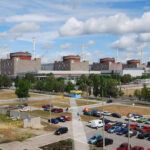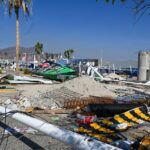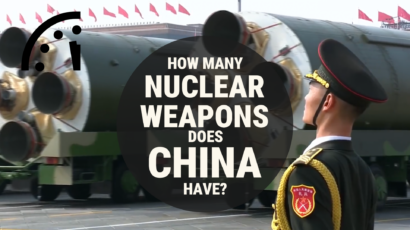The demise of the pebble bed modular reactor
By Steve Thomas | June 22, 2009
In February, Pebble Bed Modular Reactor (PBMR) Ltd., an eponymously named South African company announced a major change of strategy. After 10 years of development it said it was abandoning plans to build a full-size 165-megawatt-electric demonstration plant. Furthermore, PBMR Ltd. said it will try to redirect its future plans for the reactor from electricity generation toward thermal applications, such as coal gasification and water desalination. With government funding set to run out next year, the company will have to close if new funding is not found.
Although the company claimed the global recession had driven it to make such changes, it is hard to fathom that PBMR Ltd.’s problems are simply the result of the ongoing financial crisis since the project has been troubled for years. The company’s actions instead point to potentially deeper problems with the reactor design itself. If this is the case, there are bound to be implications for the only other major pebble bed reactor research program left, which is in China and based on the same technology.
Where the pebble bed came from
Pebble bed reactors are helium-cooled, graphite-moderated reactors in which the fuel is in the form of tennis ball-sized spherical “pebbles” encased in a graphite moderator. New fuel pebbles are continuously added at the top of a cylindrical reactor vessel and travel slowly down the column by gravity, until they reach the bottom and are removed.
The technological root of both the South African and the Chinese PBMRs is the German high-temperature, gas-cooled reactor (HTGR) developed at the government’s Jülich research center outside Cologne. A German company promoted the pebble bed design for a couple of years with high expectations that Russia would buy the technology. These hopes never materialized, however, and in 1991, it abandoned the reactor design citing a lack of realistic business prospects. It did, however, continue selling technology licenses, most notably to companies in South Africa and China.
In 1993, the South African utility Eskom took up a PBMR design that, unlike its predecessors, was expected to generate electricity using a gas turbine driven directly by its helium coolant. In 1999, Eskom set up PBMR Ltd. to develop and market the PBMR and to complete a feasibility study. The subsidiary raised money, but several investors eventually pulled out of the project. The end of the feasibility phase of the project was never announced publicly, although it appears to have been completed in March 2004.
A successor company to PBMR Ltd., which would have built the larger demonstration reactor if the feasibility study had been successful, was never created. And since none of the project partners ever agreed to fund a larger demonstration reactor, the project has, in some respects, been languishing since 2004. The development of the demonstration plant, which was originally expected to cost $223 million and be in service by 2002, was expected to cost at least $1.8 billion by the time it was abandoned. If funding had continued, it was projected to be in service no earlier than 2014. Commercial plants were not expected to be operational before 2025.
Critical faults in the PBMR design
For some, helium-cooled, graphite-moderated reactors such as the PBMR have always been the ultimate evolution of fission reactor design. The use of helium and graphite allows the reactor to burn the fuel efficiently and to operate at much higher temperatures than conventional light water reactors. It is hoped the temperatures would be high enough to allow for the reactor’s heat to be used directly for industrial processes such as hydrogen production and tar sands processing. High temperature reactors can also be designed to use thorium-based fuel as well as uranium and can be developed as fast neutron reactors that don’t need moderators.
In Germany, a 15-megawatt-electric prototype PBMR was designed, built, and operated from 1967 to 1988, followed by a 300-megawatt-electric demonstration Thorium High Temperature Reactor, which only operated from 1985 to 1988. A report explaining the delays and problems in the German pebble bed design became public in 2008 when the Jülich Center released a review of its previous pebble bed reactor work.1 It was Jülich’s design, specifically the prototype pebble bed reactor, which South Africa had taken as the basis for its PBMR.
The prototype, known as the AVR (Arbeitsgemeinschaft VersuchsReaktor or Research Group Experimental Reactor) had been portrayed to the South African public as an unqualified success. The new Jülich report, however, presented a starkly different picture. In particular, it found that the AVR’s fuel had reached dangerously high temperatures during operation. Although the exact temperature reached inside the reactor is unknown, melt strips placed within dummy fuel pebbles, which are designed to withstand heat of up to 1,400 degrees Celsius, melted, meaning the reactor was being operated beyond the design limits for the fuel. The report disagreed with a 1990 Association of German Engineers report on the AVR that stated that high temperatures within the reactor were solely the result of poor-quality fuel. Other factors, as yet unknown, were probably involved, the Jülich report concluded.
According to the South African PBMR joint venture, the maximum fuel operating temperature within the reactor should not exceed 1,130 degrees Celsius.2 If the large temperature variations observed in the AVR are a guide, however, this assumption is far too optimistic, and the PBMR’s fuel would fail. The Jülich report found that such fuel failure would contaminate reactor components on an order of magnitude higher than similar contamination in traditional light water reactors, and would thus increase decommissioning costs. The report concludes that irradiated graphite dust created by the rubbing of fuel pebbles within the AVR as they worked themselves through the reactor could become a major safety issue in the case of an accident.
The Jülich report further recommends that gas-tight containment structures be built for any commercial pebble bed plant deployed and that further research and development is necessary to evaluate the safety of the design and to understand why such high temperatures were experienced at the AVR. The need for such containments for PBMR-based plants has been the subject of disagreement for some time. PBMR Ltd. has claimed the pebble bed is “intrinsically safe” and “melt-down proof” and has argued that no pressure containment is needed and that the emergency evacuation zone needs to be no larger than the plant site itself. If a containment structure is required, the additional cost would make the reactor prohibitively expensive to build commercially. Although the Jülich report is bitterly contested by PBMR advocates, the high credibility of Jülich, which submitted the report to an extensive peer-review process, means it cannot simply be dismissed.
Impact on next generation reactor designs
All the major countries involved in designing reactors, including the United States, Germany, France, Japan, and Britain, have put serious time and effort into developing high-temperature, gas-cooled reactors such as the PBMR. Despite more than 50 years of trying, however, no commercial-scale design has been produced. Yet China and South Africa have found the allure of pebble bed technology irresistible, as if it were an “unpolished gem” waiting to be developed, regardless of the consistent engineering problems it has had since the beginning.
South Africa took a particularly aggressive approach, believing that it could develop a commercial-size PBMR design without even operating a prototype. If the PBMR is proved to be fundamentally flawed, as indicated in the Jülich report, South Africa’s $980 million investment in the project will be seen in hindsight as wasteful, one that the country, plagued with many more pressing and basic problems, could ill afford.
PBMR Ltd. is now exploring all possibilities to develop new markets for its reactor, and to collaborate on technology development, to replace the government’s funding for the project that it will lose next year. For example, following its February 2009 announcement, PBMR Ltd. negotiated a technology cooperation agreement with China’s PBMR developers including Tsinghua University’s Institute of Nuclear and New Energy Technology and Chinergy Co. Ltd. The South African project’s appalling budget and time over-runs and the company’s inability to complete a finished design may scare away other potential new customers and investors, leaving China the world’s largest investor in PBMR-based reactor designs.
China, which has much greater financial resources than South Africa, appears to be taking a conservative approach, building and studying how its prototype reactor performs before committing itself to any commercial-sized plants. In 1992, the Chinese decided to build a 10-megawatt-electric pebble bed prototype based on the AVR design. This prototype was completed in 2000 but was not connected to the grid until 2003.3 In 2001, the Chinese announced their intention to build a 100-megwatt-electric commercial version; the reactor’s output was subsequently increased to 195 megawatts. In 2004, the Chinese expected a demonstration plant using this design would come online in 2011. Yet in 2008, the Chinese tweaked the design to have two smaller reactors connected to one steam turbine, which together would produce about 200 megawatts of electricity.
Compared to the original South African PBMR design, China expects to use a steam cycle rather than helium gas for at least its first pebble bed units and plans to operate its reactor at 750 degrees Celsius. How much this decision may have been based on concerns about excessively high fuel temperatures is unclear. The Shandong site, where the demonstration plant is being built, could eventually host up to 18 pebble bed reactor modules. Unlike South Africa, which attempted to go straight to a fixed, final design, China has been actively tweaking its design. In April 2008, an engineer close to the project told Nucleonics Week, “The design continues to evolve and it is likely that the last unit built on this site won’t look exactly like the first one.”
Chinese nuclear decision-making is rather opaque to the West and if the problems identified in the Jülich report do cause the Chinese to think again about their plans for the pebble bed modular reactor, it is unlikely that there will be a public announcement comparable to that by PBMR Ltd. The project will just quietly slip out of Chinese plans. Even if this happens and the South African program is effectively ended as well, it is unlikely to be the last that is heard of the pebble bed design, since support in Germany is still strong in some quarters. But it seems unlikely those supporters will ever be able to convince anyone else to spend the large amounts of money necessary to try to bring the design to commercial fruition.
1R. Moormann, “A Safety Re-evaluation of the AVR Pebble Bed Reactor Operation and Its Consequences for Future HTR Concepts,” Forschungszentrum Jülich, 2008.
2“AVR–Experimental High-Temperature Reactor: 21 Years of Successful Operation for a Future Energy Technology,” Association of German Engineers, The Society for Energy Technologies, 1990.
3Z. Zhang et al., “Current Status and Technical Description of Chinese 2×250MWth HTR-PM Demonstration Plant,” Nuclear Engineering and Design, 2009.
Together, we make the world safer.
The Bulletin elevates expert voices above the noise. But as an independent nonprofit organization, our operations depend on the support of readers like you. Help us continue to deliver quality journalism that holds leaders accountable. Your support of our work at any level is important. In return, we promise our coverage will be understandable, influential, vigilant, solution-oriented, and fair-minded. Together we can make a difference.
Topics: Nuclear Energy, Opinion















